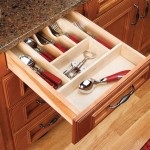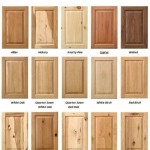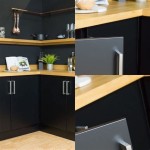Essential Aspects of Kitchen Cabinet Door Molding
Kitchen cabinet door molding plays a crucial role in the aesthetics, functionality, and durability of kitchen cabinets. It enhances the visual appeal, provides structural support, and protects the edges of cabinet doors. Understanding the different types and features of molding is essential for creating a cohesive and practical kitchen design.
There are several types of kitchen cabinet door molding, each with unique characteristics. Beadboard molding features a series of vertical or horizontal grooves that add texture and interest to cabinetry. Raised panel molding creates a recessed panel surrounded by a raised frame, giving a classic and elegant look. Mission molding is flat and simple, with clean lines and a slight bevel, reflecting a modern and minimalist style. Ogee molding is curved and intricate, offering a decorative touch to transitional kitchens.
The choice of molding material depends on the desired style and durability. Wood molding, such as oak, maple, or mahogany, is a popular option due to its natural beauty and strength. MDF (medium-density fiberboard) is a more affordable alternative that is less prone to warping or splitting. PVC (polyvinyl chloride) molding is waterproof and moisture-resistant, making it suitable for kitchens with high humidity or frequent cleaning.
When selecting molding, consider the thickness and width to achieve the desired look and functionality. Thicker molding provides a more substantial and sturdy feel, while wider molding can create a more dramatic visual impact. The shape and style of the molding should complement the overall design of the kitchen, including the cabinets, countertops, and floors.
Molding is attached to cabinet doors using adhesive, nails, or a combination of both. Ensure that the molding is securely fastened to prevent it from detaching over time. To enhance durability, apply a clear finish or paint to protect the molding from moisture, scratches, and wear and tear.
Kitchen cabinet door molding not only enhances the visual appeal of the kitchen but also serves functional purposes. It helps to protect the edges of cabinet doors from damage, reducing the likelihood of chipping or cracking. Additionally, molding can conceal any gaps between cabinet doors and frames, creating a more seamless and finished look.
When choosing and installing kitchen cabinet door molding, it is crucial to consider the overall style, functionality, and durability of the kitchen. By carefully selecting the type, material, and size of molding, homeowners can create a visually stunning and practical kitchen that will stand the test of time.

Add Moulding To Flat Cabinet Doors Home Kitchens Cabinets Kitchen

Adding Molding To Old Cabinets Diy Tutorial Kitchen Cabinet Doors

Kitchen Cabinet Doors With Applied Moulding By Allstyle

Adding Moldings To Your Kitchen Cabinets Remodelando La Casa

From Drab To Fab Adding Trim Cabinets

Home Dzine Kitchen Add Moulding And Trim To Cabinets Kitchens Redo Remodel Idea

Home Dzine Kitchen Add Moulding And Trim To Cabinets

10 Types Of Kitchen Cabinet Molding For Your Home

Understanding Cabinet Door Styles Sligh Cabinets Inc

Adding Molding To Cabinet Doors Google Search Redo Kitchen Cabinets Remodel Refinish
Related Posts








